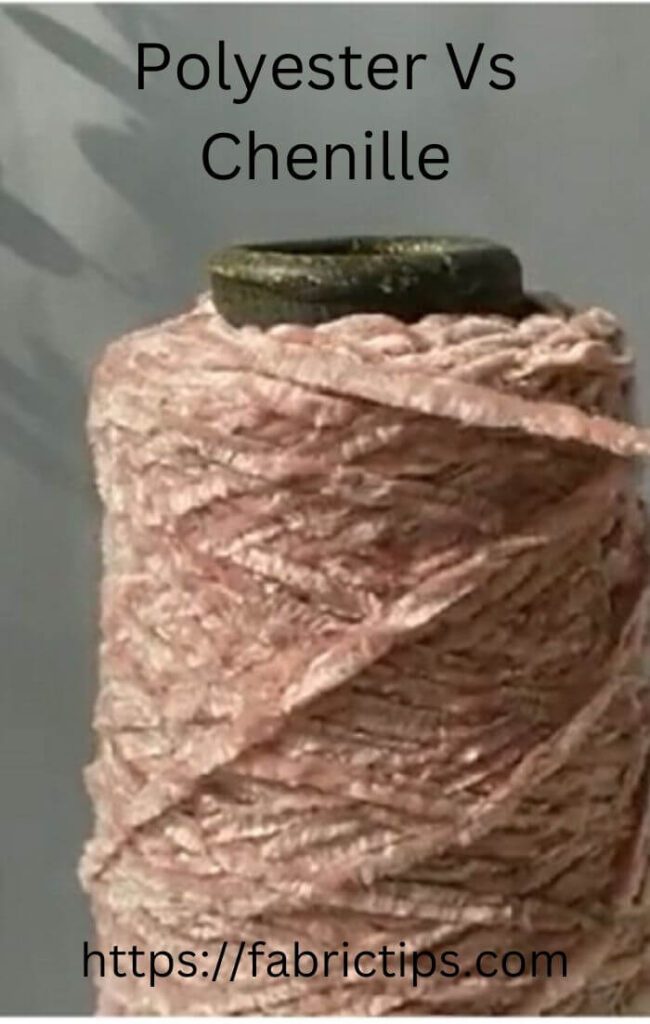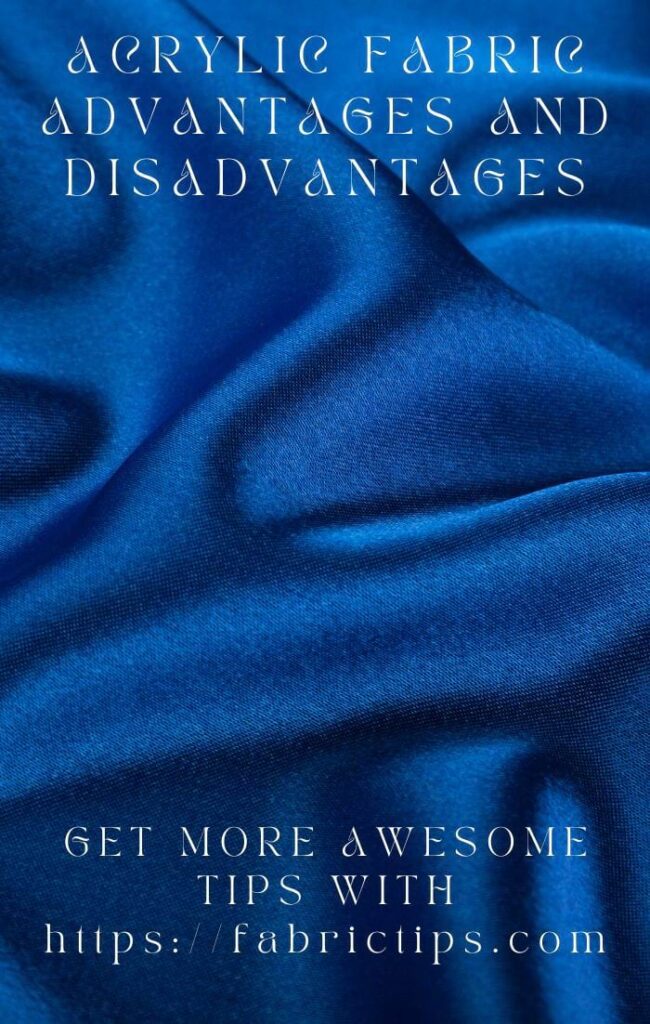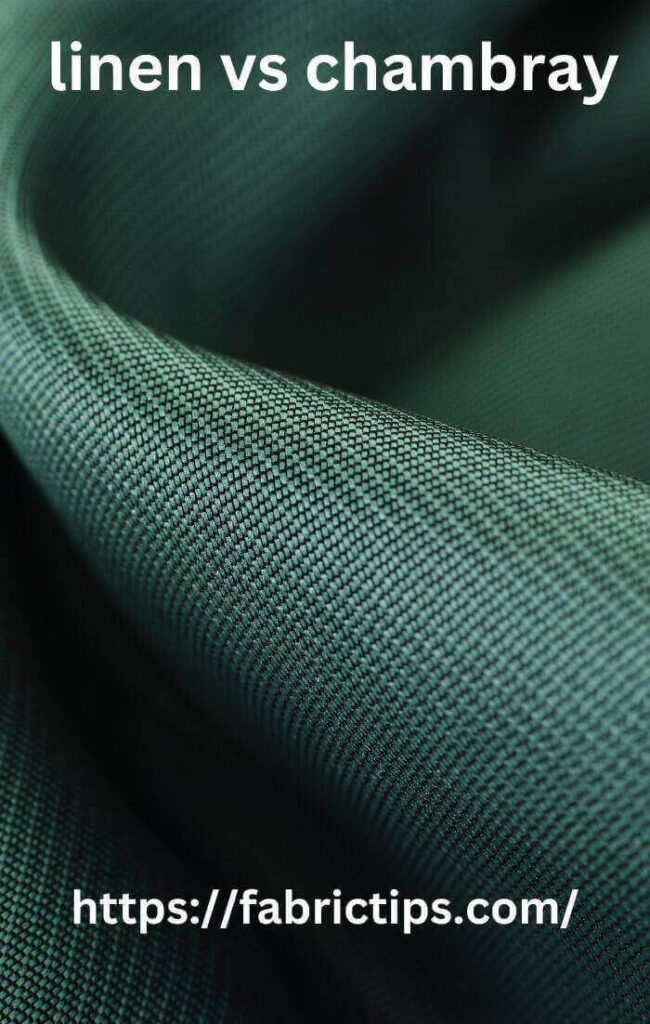Last Updated on December 13, 2025 by Wahid
Without a scorecard, it is impossible to determine who won. Similarly, there is no way to determine who won for fabrics. A scorecard can sometimes be helpful for understanding fabric types and how they work. Also, you can remember fabric information well.
It does not matter whether you prefer the glossy finish of leather or easier to clean synthetic fibers. Your sofa material should be based on your lifestyle and how it is used.
For a little luxury on your own, Polyester and Chenille are lovely upholstery fabrics. Kids & pets might run around in your house all day, so choose sofa upholstery made from durable fabrics between Polyester Vs Chenille.
When there are so many fabric and material options available both in stores & online, one can easily become overwhelmed. No worries. This article lists the top two sofa material choices. Our goal is to help you understand what to look for by breaking down the pros and cons of each one.
Polyester Vs Chenille: Key Differences Briefly
| Polyester | Chenille | |
| Breath ability:- | Less breathable | More breathable |
| Capability:- | Less | Higher |
| Softness:- | Stiffer | Softer |
| Durability:- | More durable, less prone to shrinkage | Finer fibers make the fabric less durable |
| Warmth:- | Warm | Warm |
| Uses:- | Clothing, bedding, sportswear | Cleaning cloths, bedding, towels, |
| Care:- | Easy, stay away from high temperatures | Easy, dry at low temperatures, wash with another microfiber |
| Cost:- | Inexpensive | Expensive |
Polyester Vs Chenille: In-Depth Overview

As chenille is manufactured with polyester, there’s a lot of competition between Chenille Vs Polyester fabrics. However, they differ primarily in their weaving technique. In spite of the fact that polyester is made in the same way as chenille, it won’t be as capable as chenille but will last longer and be softer.
When chenille comes from cotton or another natural fiber, it is better than polyester. Chenille is more luxurious than polyester and doesn’t feel artificial.
What Is Polyester Fabric?

Crepe, Denim, Chiffon, Poplin, and fashion fabrics come in a wide variety, each with its own history, uses, and characteristics.
Most fabrics are created from 2 categories:
1. Natural fabrics (such as silk and linen).
2. Synthetic fabrics (such as spandex/lycra and neoprene).
Polyester is a synthetic fabric that is widely used. Polyester fibers (polyethylene terephthalate) are known for their durability and low cost of manufacture. The chemical was discovered by British scientists in 1941 and introduced to the U.S. by DuPont.
Since the 1970s, polyester has become a popular fabric for suits & other clothing. In today’s world, polyester & polyester blends have become the popular fabrics made by humans and the most common synthetic fabrics as well.
What Is Chenille Fabric?
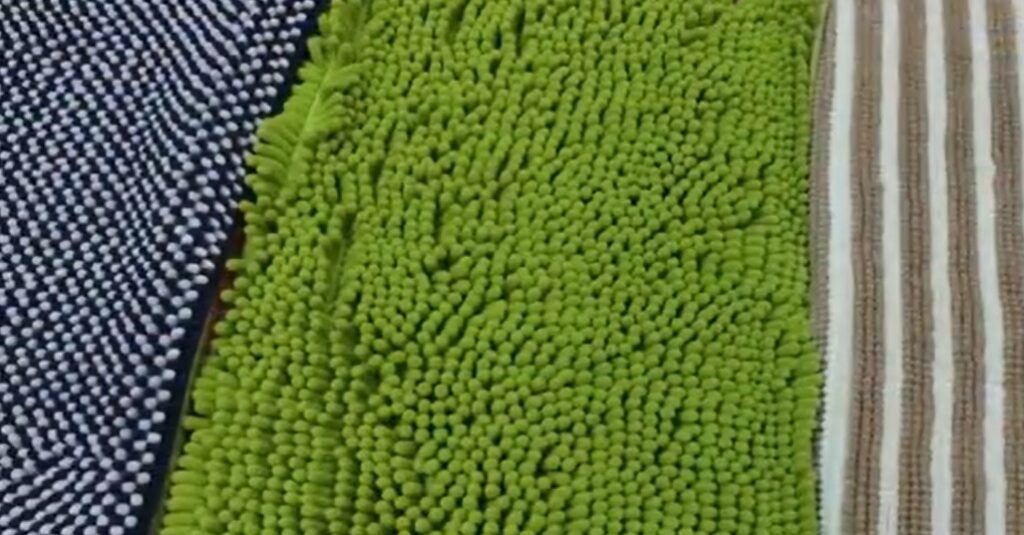
Chenille is a French word that means caterpillars. Due to its fuzzy exterior, the name refers to the appearance of caterpillars. While Chenille is usually associated with fabric, quilting also uses it quite a bit, referred to as faux chenille. Softness is the main selling point of Chenille.
Generally, this fabric can be divided into two types, the first being 100% cotton fabric used for items such as robes, towels, and baby clothing. In addition, blends of synthetic and cotton fibers are widely used for items such as upholstery, drapes, & window treatments.
Fashion-wise, chenille is an emerging material in the textile industry. Its soft, fuzzy texture made the fabric an excellent choice for many people.
Chenille Vs Polyester: Take A Closer Look

Chenille and polyester are both popular materials for household use. The same materials are used in both products, so it is hard to determine which one is actually better.
- As far as cleaning goes, polyester is always the winner, no matter what natural fibers are used to make the chenille.
- You can easily damage silk or cotton if you clean it the wrong way. Despite this, the only concern polyester has is heat during the washing and drying process.
- Considering the color options, there are many options available in both materials. For those concerned about fading, polyester is a great choice.
- However, the chenille is less popular because its color does not retain well in direct sunlight as other materials.
- In the microfiber category, the chenille has shrinkage and stretching problems when it’s made from natural fibers.
- Polyester fibers are resistant to both laundry problems and can maintain their shape despite repeated washings.
- Polyester, depending on the weave style, lasts longer than chenille. Rugs and carpets made from polyester are more durable than chenille and can be used in high-traffic zones.
- If you’re a fan of synthetic fibers, hence, polyester will win this contest for you.
Polyester Or Chenille: Which Is Better?
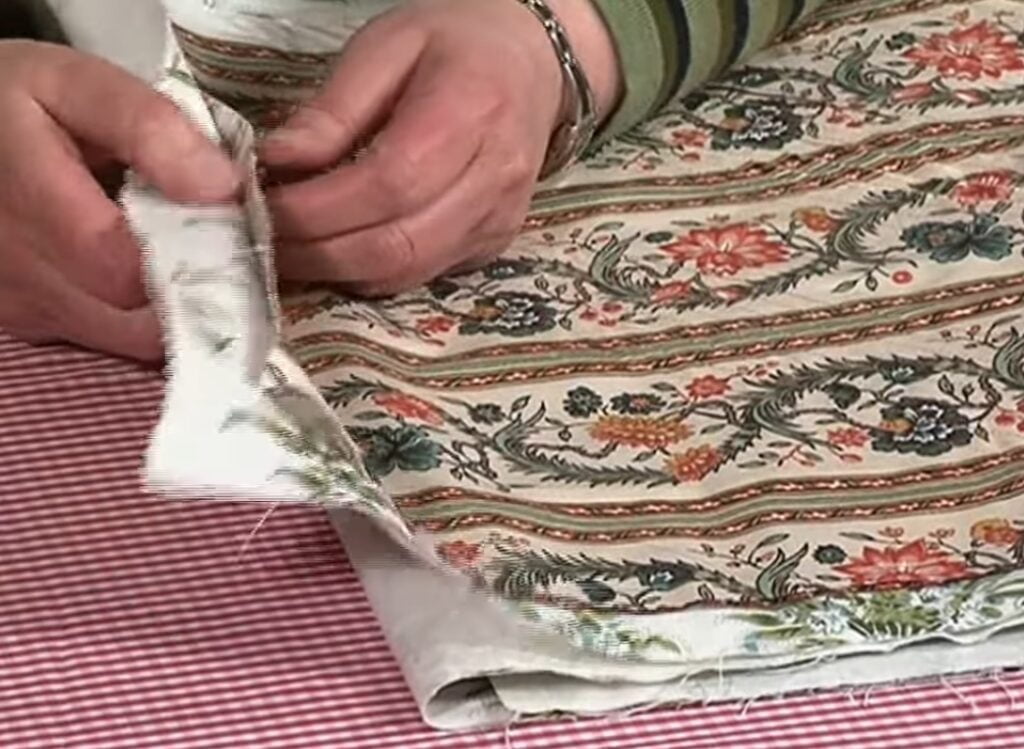
When two fabrics are competing, Chenille made of polyester fibers is considered equivalent to a virtual tie. Let’s see what fabric is the best over others.
- Ideally, the chenille material is smooth, looks luxurious, and feels natural upon touch. The cleaning process of polyester is easier than that of chenille, especially if it’s not woven into a thick pile.
- It is only the weaving process that will differ between the two materials. It is not true that chenille-woven polyester is more durable, stronger, and softer than real chenille. However, other weave patterns make it more effective.
- Therefore, since cotton and silk are used to produce chenille, so chenille should have an advantage over polyester. In most cases, synthetic fibers often lack the shine and feel of natural fibers but have a more luxurious look & feel.
- When it comes to which is better, the natural fibers of the chenille win out. It is better to have natural materials than synthetics without mentioning the process that goes into making polyester. Despite the fact that natural fibers can be harder to clean, they simply feel better and look better.
Polyester Fabric: What Is It Made Of?
Fibers made of polyester are synthetic materials derived from petroleum-derived pure terephthalic acid and ethylene glycol. Polyethylene terephthalate (PET) is produced by melting these materials.
A spinneret forms semi-crystalline fibers from molten PET by pushing it through the machine. In order to create polyester fabric, the fibers are chemically processed before they are woven together.
Chenille Fabric: What Is It Made Of?
Chenille is a fabric made of different kinds of materials, such as cotton, silk, wool, rayon, etc. Pure cotton can also be used for it. The advantages and disadvantages of pure cotton chenille vary.
Perhaps you are wondering, what is the process of making chenille, and how is it different from other cotton fabrics? The Chenille weaving technique is unique. In France, chenille yarn is made by twisting 2 warp threads around a weft thread. Also known as the Leno technique.
Nevertheless, the technique has developed over time. Increasingly, twisting is a trickier process, so low melting point nylon is used instead to prevent bare patches.
Polyester Fabric: How Does It Feel?
Natural fabrics such as cotton blends, silk, and wool are well known for their softness, whereas polyesters are usually not as soft. However, polyester can be made in several different ways, which will affect its softness. Fabrics can be coarse or relatively smooth, depending on their texture (made from thin yarns).
Chenille Fabric: How Does It Feel?
As its name suggests, Chenille has a very fuzzy texture similar to a caterpillar. The material is quite soft. In order to produce the fabric, short yarns are wrapped around two yarn cores. As a result, the fabric becomes extremely soft and has a plushy, comfortable feel. Therefore, it is an excellent material for winter. Many people have compared it to velvet.
Polyester Fabric Uses

Clothing fabrics are commonly made from polyester. Polyester yarns and polyester threads are used in manufacturing several types of apparel. There are a variety of uses for polyester fabric in fashion:
Outdoor Clothing
Due to the polyester fabric’s durability and moisture resistance, it makes an excellent clothing material for outdoor use. When the weather is inclement, you need protective clothing such as polyester. Outerwear such as windbreakers, parkas, and jackets is typically made of polyester.
Bags & Backpacks
Almost all tote bags, backpacks, and workout bags are constructed from polyester or a polyester blend. However, polyester is inexpensive, durable, and resistant to moisture as well.
Using Microfibers
Fabrics made from polyester, nylon and polyester blends are commonly used for microfibers. Although not strictly fashionable, microfibers are ideal for preventing moisture buildup on glass and delicately cleaning it.
Home Furnishings And Upholstery
In addition to clothing fashion, polyester is a popular choice for interior design & home furnishings. Every type of drapery, tablecloth, and cheap bed sheet is made from this kind of fabric.
Chenille Fabric Uses

The Chenille fabric is versatile and can be used for almost anything. Whether for clothes or home decor, this fabric can be used anywhere. Well, let’s see.
Clothing/ Dress
The chenille sweater is popular because it gives you good insulation without sacrificing style. No matter how heavy the fabric is, it doesn’t appear baggy.
Home Decor
Chenille is perfect for sofas, upholstery, bedspreads, drapes, and so much more. Its iridescent appearance is ideal for enhancing the look of your home.
Carpets & Rugs
Chenille is a durable material that makes wonderful rugs and carpets as well. However, rugs and carpets remain in place permanently due to their heavyweight.
Blankets
Chenille has a soft, plushy, fuzzy texture, so it is a great choice for comforters. The winter months are the best for snuggling up in bed. It is extremely popular to use Chenille blankets or comforters when you are cold.
Polyester Vs Chenille: Pros And Cons

Polyester
Synthetic fabrics such as polyester are often found in sofa upholstery. But why? The main reason is that it’s a durable, wrinkle-resistant, easy-to-clean option that’s also affordable. Although polyester sofas may not seem glamorous or exotic, they can still be quite beautiful.
The Pros:
Fast Drying And Strong :
Polyester is abrasion-resistant and stain-resistant, making it a very durable material. Additionally, when you clean the fabric, the fabric dries very first.
Free Of Odor :
There is only very slight breath ability to polyester, so it doesn’t absorb scents as well as other breathable fabrics, including linen and cotton.
Easy To Clean :
Polyester fabric has a very easy cleaner process than other fabric. Polyester can be dry-cleaned or machine-washed. Clean polyester with a detergent that works for all fabric types.
The Cons:
Verify The Temperature :
Temperature fluctuations or extremes can cause polyester upholstery to crack. To ensure a comfortable environment for your polyester sofa, place it in a room with an even temperature.
It’s Highly Sensitive :
Polyester fabric is tensile, meaning that it stretches over time. Additionally, it is flammable, so you shouldn’t light candles around it for safety reasons.
The Final Word
Polyester makes a comfortable, luxurious sofa fabric with great liquid resistance and easy care. The secret is to keep the polyester sofa moderately cool.

Chenille
Stylish and plush, the chenille features tufted threads (made with natural or synthetic materials), giving it a fuzzy, soft texture that’s extremely comfortable. This fabric is surprisingly durable as well. However, if your pets have claws, they can snag on the threads when you are not paying attention.
The Pros:
Amazingly Soft :
Whether used for upholstery or as a floor covering, the chenille is a luxurious material that is extremely soft. Chenille sofas are supremely comfortable and desirable because of this feature.
Designed To Be Long Lasting :
Chenille is quite durable as well as easy to clean. Because of that, Chenille can withstand heavy traffic & wear, making it a durable and long-lasting material.
The Possibilities Are Endless :
Chenille is available in a variety of colors, so you’ll be sure to select a color that matches your style. Comfort and color are a winning combination.
The Cons:
Shifting Is Possible :
The Chenille fabric is extremely stretchy, so you can expect it to loosen over time. It also costs more to add an extra layer of strength to it.
Catching Up :
It is possible for dust or debris to get trapped between the fibers of the chenille. Additionally, claws from animals can easily damage chenille threads. Hence, pet owners need to take that into account before buying chenille furniture.
The Final Word
Even though this sofa fabric can withstand heavy use, it requires regular maintenance. Regular vacuuming of Chenille sofas and professional cleaning of liquid spills is necessary.
FAQs
Is Polyester Breathable?
In order to create this fabric, polyester fiber is woven using a light material that is then brushed to enlarge the fibers’ volume. These fibers have a structure that makes fleece both breathable & warm.
Does Polyester Furniture Crack?
Stretches easily: In comparison with other fabrics, polyesters have high tensile strength. This allows them to stretch with time.
Delamination effect: The tendency for a polyester fabric to separate from its backing. This occurs when high pressure is applied.
Cracking: If the fabric is exposed to different temperature ranges, the polyester fabric may crack.
Is Chenille Fabric Durable?
Chenille is both soft and durable, which makes it an attractive material. Furthermore, its pile is very nubby (like tiny loops), so dirt is easily hidden. But be careful; animal claws can completely destroy the pile (in particular, cat claws).
Chenille Feels Like Velvet, Doesn’t It?
Chénille can be woven from cotton, silk, viscose, rayon, or a combination of several materials, both synthetic and natural. As compared to velvet, it is often silky and appears more dimensional.
Is Polyester A Suitable Fabric For A Sofa?
The fabric polyester is an excellent choice for furniture upholstery, such as sofas, chairs, and beds. Because it is synthetic, people tend to think of it as inferior to natural materials, such as cotton or leather.
Does Chenille Keep You Warm?
Chenille sweaters are an obvious choice when you need to be warm. Their softness makes them feel comfortable while also providing insulation & keeping them warm and not being bulky.
Is Polyester Pet Friendly?
Upholstery is usually made of a blend of polyester and other fibers. As a result, fading is reduced, wrinkle resistance is improved, and napped fabrics are no longer crushed. This fabric has limited uses as an upholstery fabric that is pet friendly.
Is Chenille Like Microfiber?
Chenille and microfiber fabrics both are durable enough to be used for upholstery. As chenille has a pile, it’s slightly more likely to attract stains than microfiber since it’s smooth and won’t absorb liquids. Both fabrics come in a variety of colors and can be washed in cool or moderate temperatures.
Is Chenille Breathable?
Chenille has a very heavy & thick texture, as opposed to cotton, which is lightweight and breathable. Therefore, if you want to wear winter clothes, you should choose the chenille for its breath ability.
Does 100% Polyester Have The Same Properties As Microfiber?
Microfiber cloths are sometimes made of 100% polyester. Some are made from polyester and synthetic materials, usually nylon. Polyester is also known as microfiber, but careful. The two are not the same.
How Can Polyester Fabric Be Used?
In addition to their strength, polyester fibers do not rip, stretch, or pill as easily as cotton and natural fabrics. Due to the strength of polyester, it can withstand abrasion while being washed and does not require special maintenance.
Can You Put The Chenille In The Washing Machine?
Use a delicate cycle to bring down the run time & to ensure a gentler wash for your chenille. Unless your machine has a delicate mode, handwashing your chenille items is the best way. Regardless of whether an item is placed inside a pillowcase, you should always wash it using a gentle way.
What Is Cotton Chenille?
Pure cotton fibers are used to make cotton chenille. It is mainly used to produce baby products like blankets and towels. Chenille, made from pure cotton, has a lower durability rating. Therefore, it is usually made of silk, wool, rayon, etc.
Is Chenille Fabric Expensive?
Yes, Chenille is an expensive fabric due to its amazing versatility. Some soft fabrics are not very durable, whereas chenille lasts a long time. The fabric is ideal for furnishing your home. The chenille is rather expensive, however, because of its rich quality. Luckily, prices may vary according to the materials used.
Is Chenille Right for Upholstery?
Obviously, yes. Chenille is an ideal upholstery fabric due to its high durability. Fabric adds an elegant look to your furniture, as well as a slick appearance. It is available in a variety of colors. Therefore, you can make your living room look more appealing by contrasting the colors with the room background.
What Is The Most Durable Upholstery Fabric?
The highest durable fabric is microfiber, along with leather. Make sure it’s 100% polyester, so it doesn’t fade, stain, or leave watermarks when you wash it. Besides being simple to clean, microfiber is also a durable and long-lasting upholstery fabric.
Can polyester furniture be durable?
Indoor and outdoor polyester fabrics are popular upholstery materials. The fabric is water-repellent, resistant to fading (sunlight won’t fade it), and has proven to last for years to come. When kids and pets are present, polyester sofa fabrics are a wise choice due to their long-term durability.
Finale
Which one should you use Chenille Vs Polyester? There is only one difference between the two materials: how they are woven.
Even though polyester is made in the same way as chenille, the chenille will be stronger and harder, while polyester will be softer and more durable. But in the case of chenille made from cotton and other natural materials, cotton would be a better choice than polyester. Polyester feels artificial, but Chenille has a rich, luxurious appearance.
In this case, since cotton and silk are used in chenille, polyester should lose to chenille. Fibers made from natural materials are generally superior to synthetics due to their appearance and feel.
